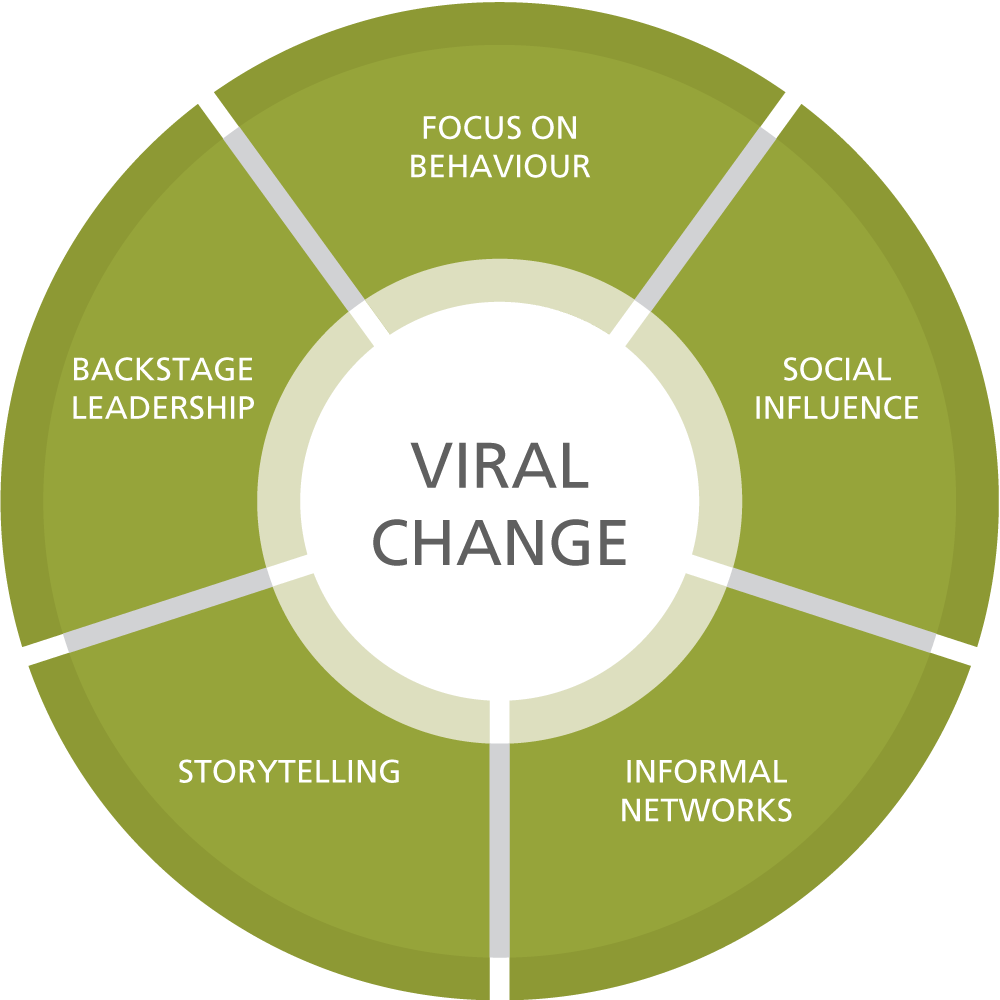Viral Change, how to make a change go viral internally
At Lemento, we believe in the power of Viral Change. It is an approach that spreads the virus of change from within. The concept was developed by Dr. Leandro Herrero of The Chalfont Project. We have successfully applied the principles several times with our clients. At the same time, we let this go hand in hand with internal communication, top management commitment and middle management support.
What is Viral Change?
Viral Change is a way to achieve small- or large-scale cultural change in organizations through the combined power of the following elements:

- Focus on behavior: changing processes, systems or structures is easy. But change is only successful if the behavior changes.
- Social influence: influence by peers (peer-to-peer) is the most important force for real sustainable change. Hierarchical influence is highly overrated.
- Informal networks: formal structures exist in every organization. They never bring about the same as what comes about informally.
- Storytelling: the art of telling the right story in change is the key to success.
- Backstage leadership: the real driver of change is not formal top-down leadership! But the invisible leadership among influential employees, usually without impressive titles or job descriptions.
Why Viral Change?
The principles are applied to various organizational challenges. Many companies and organizations are looking for a customer-oriented culture, a culture that focuses on safety, a culture of performance or innovation, etc. Viral Change can also be applied in the event of a merger or acquisition, or during a reorganization. Several companies such as Pfizer, Schering-Ploug and Baloise successfully applied Viral Change. CEOs from these companies say that culture change is most powerful from within the organization.
How does Viral Change work?
Step 1: Determine desired core behaviors.
Start from a longlist of behaviors that fit the new culture and cluster where possible. Finally, arrive at a shortlist. Don’t go overnight here. In this step, you are “designing” the virus.
Step 2: establish the ambassadors longlist.
Ask the following question to middle management. “Name 3 to 5 colleagues from your team who can be trusted, are good in the group, give good advice, are good at their job, are motivated, respected and feel good at work.”
Step 3: Create a group of motivated ambassadors
Invite your candidates and immerse them in the change task and core behaviors. Clearly outline expectations, responsibilities and freedoms. Let them decide for themselves whether to participate or not.
Step 4: spread the virus
Provide the ambassadors with stories and communication tools, give them ideas on how to spread the virus through their networks, bring them together regularly to share experiences.
Step 5: make the change sustainable
Introduce an employee NPS as a quick barometer and an annual in-depth employee survey to keep your finger on the pulse. Use the results primarily as a conversation opener, not as a quantitative tool to compare teams/departments. Make adjustments where necessary and embed change in the organization.

If your company is on the verge of a major transformation?
Engage Lemento as a Certified ADKAR Change Management partner!
Many change projects end up with less than expected. And that is often due to the lack of solid change management. At Lemento, we have built up a special expertise in realizing sustainable change in companies and organizations. All supported by the right methodology and insights.


